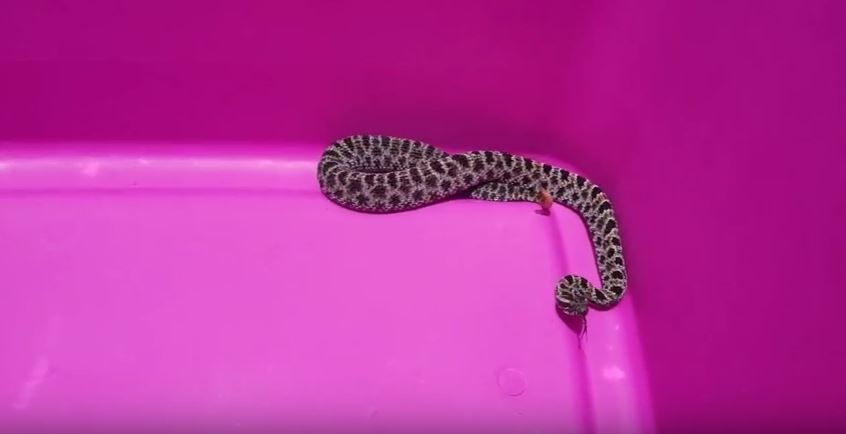The Pigmy Rattlesnake: appearance, biology, life cycle, habitat, diet, behavior

A pigmy rattlesnake is a small snake and an adult may not reach over two feet long. A juvenile snake has a yellow tail. These snakes are typically very small and cannot be easily seen or heard. It has a rattling that may sound like a buzzing bee. Even though it is small, when it feels threatened, it can be aggressive and it may have a nasty bite.
Appearance: The color pattern of a pigmy rattlesnake may differ depending on its habitat. It can have different blotches or uniform patches that run down the body, and it can be different colors, including blue, black or green. It could also have different shades of brown or red.
Diet: A pigmy rattlesnake can eat different animals, including small mammals, lizards, insects and small frogs. It hunts through ambushing its prey, pouncing on it quickly from a hiding place such as a pile of leaves. It uses its fangs to inject venom into their prey.
Behavior: Even if the pigmy rattlesnake is small, this does not mean that it is docile or calm if it meets humans. It is able to strike if it feels threatened or cornered. The good news is that it does not have enough venom to threaten the lives of humans, but the bite has to be treated since it can lead to discomfort.
Habitat: Pigmy rattlesnakes like to live in burrows, but they do not have the capability to dig their own, which means that they normally live in an abandoned burrow, like that of the gopher tortoise. The snakes are found in mixed forests, woodlands and any other place with leaf litter. They can also be found in marshes and sand-hills.
Reproduction: The mating season of pigmy rattlesnakes is spring, and most snakes will give birth in August. They normally give birth to six live snakes.
Life cycle: It is not clear how long the pigmy rattlesnake may live when it is in the wild, but when it is kept in captivity, it can live over 20 years.
Go back to the How to Get Rid of Snakes page or email us if you have any other questions about The Pigmy Rattlesnake: appearance, biology, life cycle, habitat, diet, behavior
About Us
We are the Pest Education Network, a non-profit organization that focuses on wildlife and pest removal education. Our approach utilizes Integrated Pest Management, a strategy advocating prevention and humane methods.


